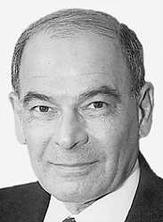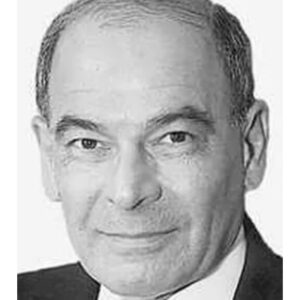
Transportation issues are rarely about getting from here to there. Usually they involve what land will be developed and who’s going to get rich. Add to the equation those who are about to get stiffed.
Interchanges, access roads and rail stops are as American as money. So, too, are engineering contracts, performance bonds, bond counsel awards, construction companies, buildings and trades union jobs with prevailing wages and public-private partnerships where they exist. Those who will be displaced or inconvenienced or worse, pay the taxes and fees, are irrelevant.
Maryland’s tawdry history is worth remembering as Gov. Larry Hogan (R) leads a delegation of transportation and elected officials to Australia to study infrastructure design and financing methods as the state prepares to commit billions to new and expanded transportation projects. Public-private partnerships, known in their vernacular as P3’s, are a design for the private sector to profit at public expense.
It is an iron law of commerce that once government installs roads and sewer lines the condos and malls will follow. A sampler:
Spiro T. Agnew maneuvered a land deal in Annapolis near the access points to the Second Bay Bridge that he had authorized as governor to benefit friends who were his ambassadors to the wonderful world of money. He also agreed, as governor, to serve as a letterhead board member of a bank formed by some of the same group of landowners that hoped to trade on his name and do business with the state.

Frank A. DeFilippo
Agnew also tried to direct a proposed subway design and manufacturing contract to the only company in the world that produced a rubber-tire light rail system – Westinghouse, in Anne Arundel County – that was run by a fellow-Greek pal and supporter, thereby eliminating any competition from the standard steel-wheel systems.
Pete Rahn, Maryland’s secretary of Transportation, quietly slipped a $68.5 million contract onto the Board of Public Works’ agenda without public notice or competitive bidding. The contract was abruptly pulled from BPW consideration when members learned from newspaper reports that the contract was intended for Rahn’s former employer in the private sector. Rahn is Hogan’s in-house cheerleader for public-private partnerships.
The late Del. W. Dale Hess, of Harford County, made his millions with foreknowledge of highway interchanges under an amendment that he sponsored as House majority leader. Hess’s amendment, quietly attached to a roads program bill in the mid-1960s in the mayhem near midnight adjournment, allowed lawmakers an advance look at highway plans before they were made public. Hess built motels and restaurants at interchanges. Marvin Mandel, then House speaker, was Hess’ personal lawyer.
Harry R. Hughes resigned as Maryland’s transportation secretary, claiming the process for the awarding of contacts for the Baltimore Metro system was “tainted.” The resignation provided the launch for Hughes’ successful campaign for governor in 1978.
The original Rouse Company owned or bought land at every major station or stop along the proposed route of the Baltimore Metro System and eventually owned or developed malls – Owings Mills, Mondawmin, Charles Center and White Marsh. (The original Metro route was U-shaped and designed to loop from Owings Mills through Baltimore City out to White Marsh, connecting to the two new town centers in Baltimore County.)
The entire New Town of Columbia was built on farmland assembled by stealth on and around land owned by Sen. James Clark Jr., who, as a legislator, voted for state funds for the roads, water and sewer infrastructure that made the development possible. Clark’s land increased dramatically in value. James Rouse, the company’s founder, had observed that Columbia wouldn’t exist without Clark’s help.
When the Beltway and later the Metro system were being designed and built around the nation’s capital and through Maryland and Virginia, it was said that there were frequent meetings among developers in the two states on opposite sides of the Potomac and frequent visits by couriers, or bagmen, between the two.
And now Hogan is heading a delegation to Australia to study that country’s infrastructure.
Huh?
Australia, it turns out, is well ahead of the pack in privatizing its roads and other public projects, a topic near and dear to Hogan’s Republican heart. Hogan, in private life, is in the real estate business which has prospered since he took office. It is managed by a trust during his governorship but run by his brother.
Hogan’s good buddy, Vice President Mike Pence, for example, was in Australia not long ago and returned chock-full of ideas for President Trump on how to rebuild America’s infrastructure with other people’s money. Trump has done nothing to follow through on his promise except his cherished wall partitioning Mexico.
Hogan has before him proposals to add toll lanes to I-495 and I-270 around the District of Columbia, a replacement for the Harry W. Nice Memorial Bridge in Southern Maryland where the bicycle bullies who pay no road taxes but are demanding a lane of their own, and a third bridge across the Bay linking the Western and Eastern Shores. Hogan’s mind is made up that a new span must be built at or near the site of the existing two bridges outside of Annapolis.
Hogan is a huge fan of P3’s, which are a popular way of getting things done in Australia, where the government invests 3.6 percent of its gross domestic product in infrastructure – well above other advanced economies, according to the government’s own poop sheet. Australia is investing $100 billion in transportation infrastructure over the next 10 years.
That’s quadruple the estimated cost of Trump’s wall of $21.6 billion, which is, after all, infrastructure for which construction money for military projects, including several in Maryland, is being diverted to help pay the cost. But it’s nothing comparable to the inter-continental railroad that Abraham Lincoln envisioned and built or the Interstate highway system that Dwight D. Eisenhower commissioned.
There are a couple of major problems with P3’s. The first, and maybe most significant from a citizen’s view, is that the private partners in a triple-P arrangement cannot be booted out of office if they mess up, as elected officials can. This gives the public no redress if they get fleeced or if the deal goes awry.
The most egregious example is the state of Indiana, which transferred its turnpike to a group of private investors for a lump sum payment of $3.6 billion. The investors defaulted and the state had to bail out the road.
Second, the cost of borrowing money is much higher for private investors than for a state because of tax laws and guaranteed sources of repayment which are reflected in tolls. In Maryland, for example, income from the state’s eight toll facilities and E-Z Pass are pledged to pay off state bonds. If the state defaults, the bondholders can, theoretically, foreclose on the toll facilities. They never have.
There is an ironic twist in this, too, in that Hogan keeps reducing tolls as a political gesture and, in effect, simultaneously reduces bonding capacity for transportation projects. Bonding is a 1×10 ratio: Every dollar in the transportation money pool will leverage $10 in transportation bonds. Bonds can be refinanced. But in P3 arrangements, if the tolls fall short, as they did on the Intercounty Connector, the users are stiffed with higher fees or the P3 defaults, with the same costly result.
Private investors rely solely on tolls for profit as well as construction and maintenance costs. Privatized toll roads in the Washington area levy their fees on volume. At their peak capacity during rush hours, tolls can range as high as $40 a one-way ride.
What is incalculable in the quantum, though, are the hidden costs of doing business in Maryland (see above) as there always seem to be.
Hogan no doubt will return from Australia with a doubled-down aggressive push for P3’s thoroughly reinforced by the down-under experience and sold on the idea that this is the direction in which the world is moving.
He could have saved some airfare and flight time by traveling a much shorter distance to Canada, which does public-private partnerships just as routinely as Australia. Or cheaper still, maybe he could have said something when he attended a State Department lunch for the Australian prime minister on Friday.




 Creative Commons Attribution
Creative Commons Attribution